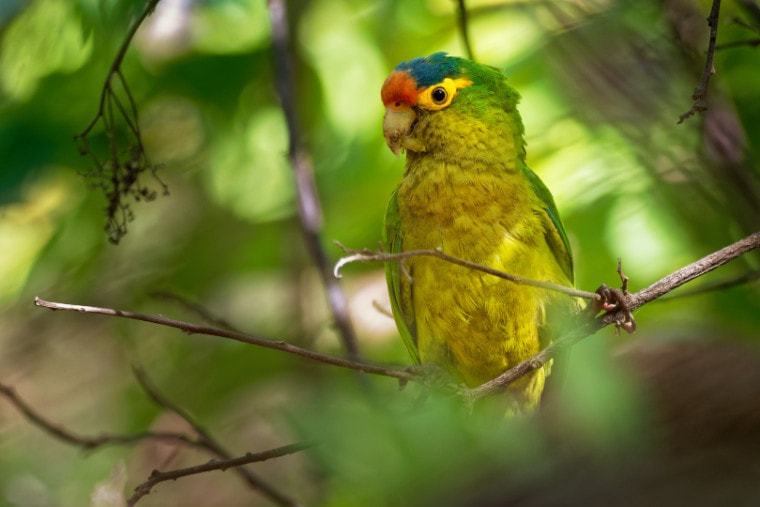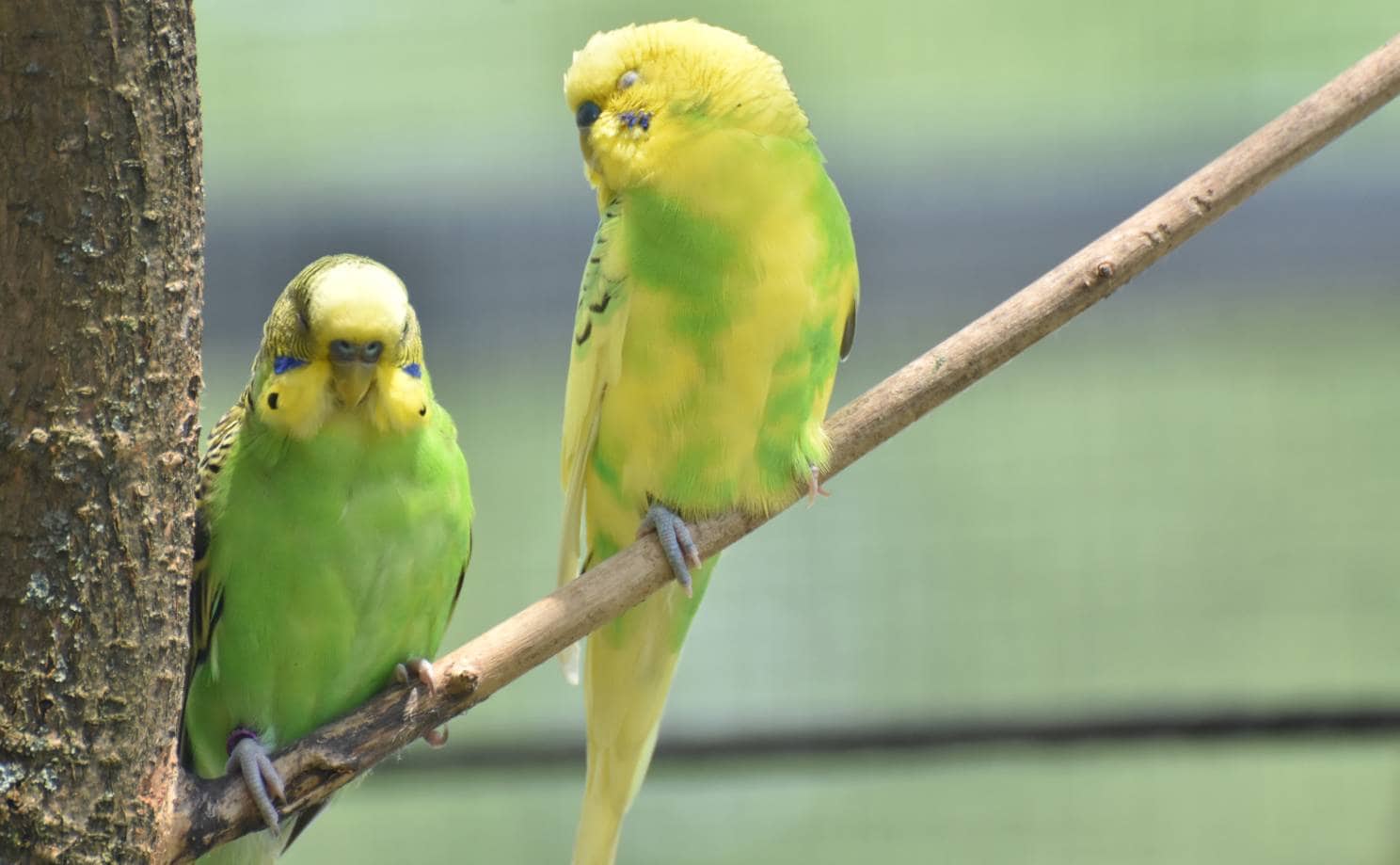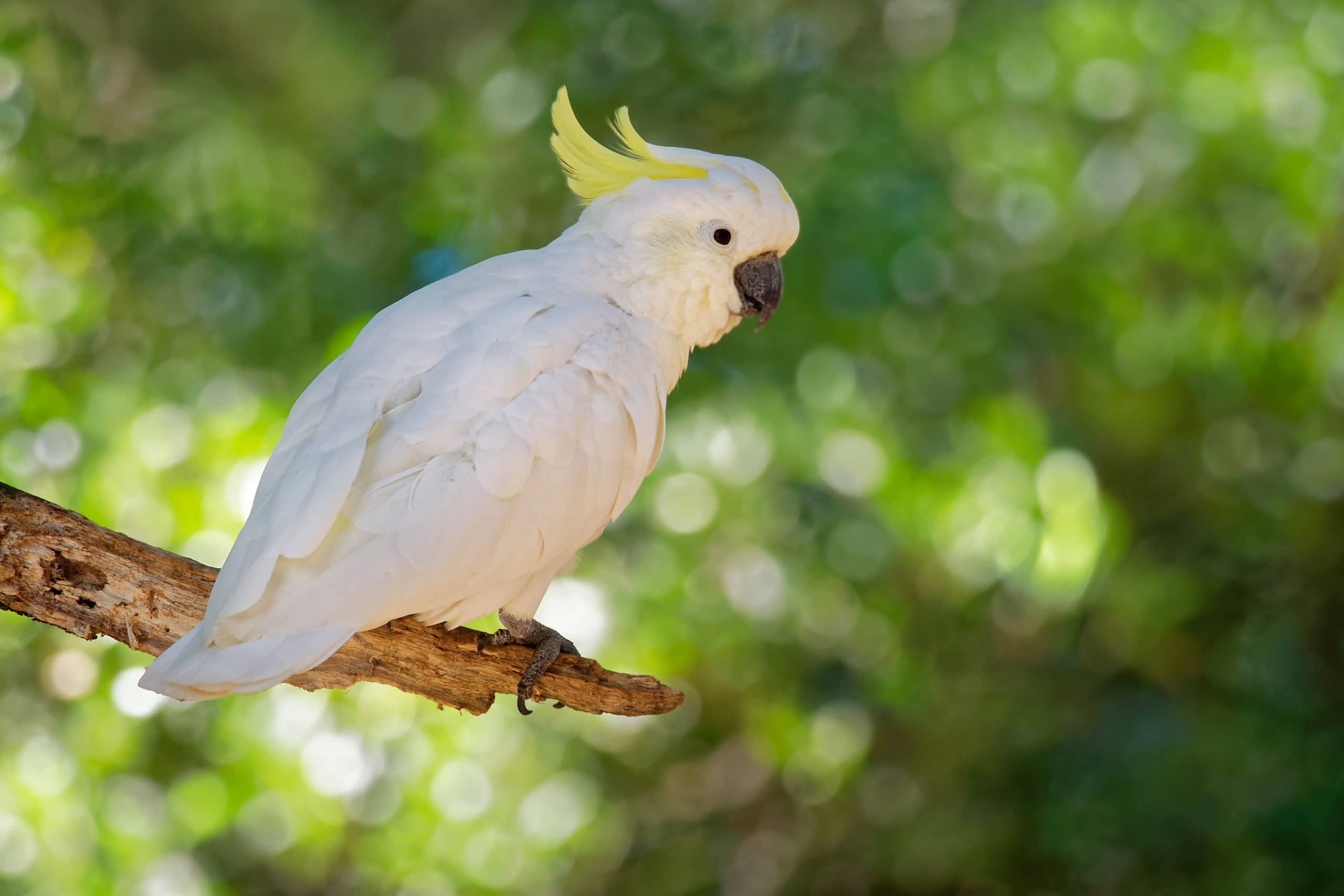
A pint-sized parrot, the Half-Moon Conure has a friendly personality and gorgeous green plumage. A tad quieter than other conures, the Half-Moon Conure makes an exceptional pet for novice bird owners. Social and super smart, this dwarf parrot craves attention and can develop a deep bond with his owner.
If you’re interested in learning more about this friendly feathered fella, keep on reading for an in-depth guide on caring for the Half-Moon Conure!
Species Overview
| Common Names: | Half-moon conure, Orange-fronted parakeet, Petz’s conure |
| Scientific Name: | Eupsittula canicularis |
| Adult Size: | 9.5 inches |
| Life Expectancy: | 20 years |
Origin and History
The Half-Moon Conure is a native bird to Costa Rica and Mexico. Commonly seen in large flocks of 100+ birds, the Half-Moon Conure resides in lowlands, woodlands, and even the savannah.
A unique bird, the Half-Moon Conure will often take up residency in abandoned woodpecker holes or on termite mounds to nest and lay its eggs. It is not an endangered bird and makes an excellent pet for those looking for a quieter companion.

Temperament
An excitable, agileand active birdie, the Half-Moon Conure loves to play, explore, and climb. Generally very friendly and interactive, this bird can form powerful attachments to his owner. He loves to cuddle and sit on your shoulder as you go about your daily chores. Trained Half-Moon Conures will stay in an open playpen without getting into too much mischief.
Speech & Vocalizations
Quieter than most birds, the Half-Moon Conure would make a fantastic pet for those looking for a more subdued parrot. Not very chatty, the Half-Moon Conure can mimic sounds if properly trained. These parrots chirp, whistle, and warble.

Half-Moon Conure Colors and Markings
The Half-Moon Conure is a vibrantly colored emerald-green parrot with an orange forehead, bright blue crown, yellow eyes, and blue patches along the tail. Rather than a black beak, the Half-Moon Conure has a horn-colored one. Both genders have the same color patterns.
Caring for the Half-Moon Conure
The Half-Moon Conure craves a lot of space. For one bird, you’ll need a cage that is at least 18x18x18 inches to allow for both vertical climbing and horizontal exercise. The bars should be spaced no more than ¾ inches apart. A very curious bird, the Half-Moon Conure loves to climb and explore his habitat. Ensure your bird has plenty of mental stimulation by providing him with chewable wooden toys, bells, boxes, and mirrors. Natural perches crafted from poplar or willow are great for your Half-Moon Conure’s beak and feet. Never buy perches that have been treated with pesticides or toxins as your pet may accidentally ingest them if he gnaws at the wood. The perches should be between two and 2.5 centimeters in girth. Line the bottom of the cage with newspaper and change it daily. Cover the cage at night to help make your parrot feel secure and safe. Avoid placing the cage near drafty windows or vents. An ideal temperature range for the Half-Moon Conure is between 65 and 80 degrees.
If you plan to breed your birds, keep a 12x12x12 inch nesting box in the cage.

Common Health Problems
Generally a healthy bird, the Half-Moon Conure can live for up to 20 years. A native bird to warmer climates, the Half-Moon Conure can suffer from respiratory issues if he gets too chilly. Other health issues that can affect this breed include pneumonia, liver problems, conure bleeding syndrome, Pacheco’s disease, feather and psittacine beak disease, and aspergillosis. Routine vet visits ensure your Half-Moon Conure stays in tip-top condition throughout his life.
Signs of a potential health problem include discharge from the mouth or nostrils, ruffled feathers, refusal to eat, cloudy eyes, resting with the head tucked under the wing, labored breathing, rapid weight loss, lethargy, growths around the beak, and closing and opening the mouth.
Diet and Nutrition
In the wild, the Half-Moon Conure mainly survives on fruits. As a pet, your bird can enjoy a varied diet that includes fresh veggies, fruits, and commercial avian pellets. Prevent calcium deficiency by supplying your Half-Moon Conure with a cuttlebone and calcium blocks. You can occasionally treat your feathered friend to pasta, meat, and cooked eggs.
Never feed your parrot butter, salt, or avocado. These are all toxic to Half-Moon Conures.
Exercise
Half-Moon Conures are extremely active and need a lot of space to stretch out their wings, explore, and play. A well-trained Half-Moon Conure can be left unsupervised in an open playpen, as long as there are no other animals present.
Always handle your bird with the utmost care. To properly hand train your Half-Moon Conure, you might want to clip his wings. A bathroom with covered windows and mirrors is a safe place to train your bird. Always reward good behavior with treats and verbal praise. Quick, 20-minute hand training sessions several times per day work best for this bird.

Where to Adopt or Buy a Half-Moon Conure
You can purchase a Half-Moon Conure at your local pet store or from a reputable bird breeder. Chat with your local bird store or avian vet for their recommendations on good breeders in your area. Many shelters have birds, including Half-Moon Conures, for adoption.
Final Thoughts
If you’re looking for a great little bird, the Half-Moon Conure may be the perfect parrot for you. Active, social, and rather quiet, the Half-Moon Conure is great for novice bird owners. Always provide your bird with lots of love, attention, and toys to keep him mentally stimulated.
If you’re a feather fiend, the Half-Moon Conure may be a great pet for you!
Featured Image Credit: Martin Pelanek, Shutterstock







